The boom of assets in cyberspace has brought companies into the folds of the cyber world. This growth, however, has come with its own set of flaws and vulnerabilities. The management of these vulnerabilities can be a tedious task. Services provided by vulnerability management companies thus become invaluable. This article will detail the top 11 vulnerability management companies, their importance, and their top features.
11 Popular Vulnerability Management Companies
- Astra Security
- Qualys
- Rapid7
- BreachLock
- ArcticWolf
- Orca Security
- Alert Logic
- Symantec
- Cobalt
- SecureWorks
- Sophos
Top 11 Vulnerability Management Companies
1. Astra Security
Features:
- Scanner Capabilities: Web and Mobile Applications, Cloud Infrastructure, API, and Networks
- Accuracy: Zero False Positives Assured (Vetted Scans)
- Scan Behind Logins: Yes
- Compliance: PCI-DSS, HIPAA, SOC2, and ISO 27001
- Integrations: Slack, Jira, GitHub, GitLab
- Expert Remediation: Yes
- Pricing: Starts at $199/month
Astra Security, one of the best vulnerability management companies out there, provides a world-class comprehensive vulnerability scanner and automated or manual pentesting with the following features for effective vulnerability management:
Regular Pentests
Astra provides regular manual or automated pentests at the request of customers. These pentests are entirely customizable according to the needs of the customer. The pentest service provided by Astra is carried out by ethical hacker experts with years of experience.
Astra Vulnerability Scanner
Astra Security provides continuous scanning facilities with its comprehensive scanner that is capable of conducting more than 3000 tests to find any and every hidden vulnerability.
It offers deep scans for web applications, APIs, networks, mobile applications, and cloud infrastructure.
CI/CD Integrations
Astra offers CI/CD integration services for organizations. This helps companies move from DevOps To DevSecOps, thus giving more priority to security within every phase of a project’s development. It offers integrations with Slack, GitHub, and GitLab to name a few.
Compliance-specific Scans
Astra offers the option to scan for specific compliances required by your organization. It provides a compliance-specific dashboard where you can opt for the specific compliance to scan for.
Once the scan is complete the results reveal the areas of non-compliance. Compliance-specific scans provided by Astra include PCI-DSS, HIPAA, SOC2, ISO 27001, and GDPR.
Pentest Certificate
Astra’s pentest certificate is publicly verifiable and can be displayed on customer websites to showcase its reliability and security-conscious nature. This brings about more customers who trust the services offered by your network.
Intuitive Dashboard (CXO friendly)
Astra’s vulnerability scanner boasts a CXO-friendly dashboard that is super easy to navigate. It displays the vulnerabilities as and when they are found.
The dashboard also offers the option to comment under each vulnerability so that the development team can clear queries quickly.
Zero False Positive
Zero false positives are a sure thing with Astra’s thorough vetting which is done by expert pentesters based on the automated pentest results obtained. This double-checking, therefore, ensures that the customers don’t have to worry about any false positive vulnerability detection.
Detailed Reports
Once the vulnerability scanning is completed a report is generated which includes the scope of testing, a list of vulnerabilities found, their details, and possible remediation measures.
It also mentions its CVSS score and Astra goes a step further by providing customers with an actionable vulnerability risk score based on which critical vulnerabilities can be prioritized.
Remediation Support
Once vulnerability scanning with Astra is complete Astra also provides detailed steps for remediation based on risk prioritization. This is done with the aid of POC videos and collaboration within the vulnerability dashboard.
Pros
- Can detect business logic errors and conduct scans behind logins.
- Provides rescanning upon successful remediation of vulnerabilities.
- Provides compliance-specific scans and reports.
- Ensure zero false positives through vetted scans.
Cons
- Could have more integrations.
2. Qualys

Features:
- Scanner Capabilities: Cloud, web applications
- Accuracy: False positives possible
- Scan Behind Logins: Yes
- Compliance: PCI-DSS
- Integrations: Cisco, IBM, Splunk
- Expert Remediation: Yes
- Pricing: Quote Upon Request
Qualys provides its customers with continuous monitoring, vulnerability management, compliance solutions, and web application firewalls.
Qualys has a large database of known CVEs that is constantly updated. Its scalability and accuracy are some of the reasons that make this tool a popular choice.
Besides its notable vulnerability management services, Qualys also offers network mapping and detection, vulnerability prioritization and remediation as well as cloud security.
Pros
- Timely alerts and responses.
- Well-designed and easy-to-navigate user interface.
- Constant updates ensure the current security measures for the cloud environment.
Cons
- Limited scheduling options.
- Scans are not applicable to all applications.
3. Rapid7
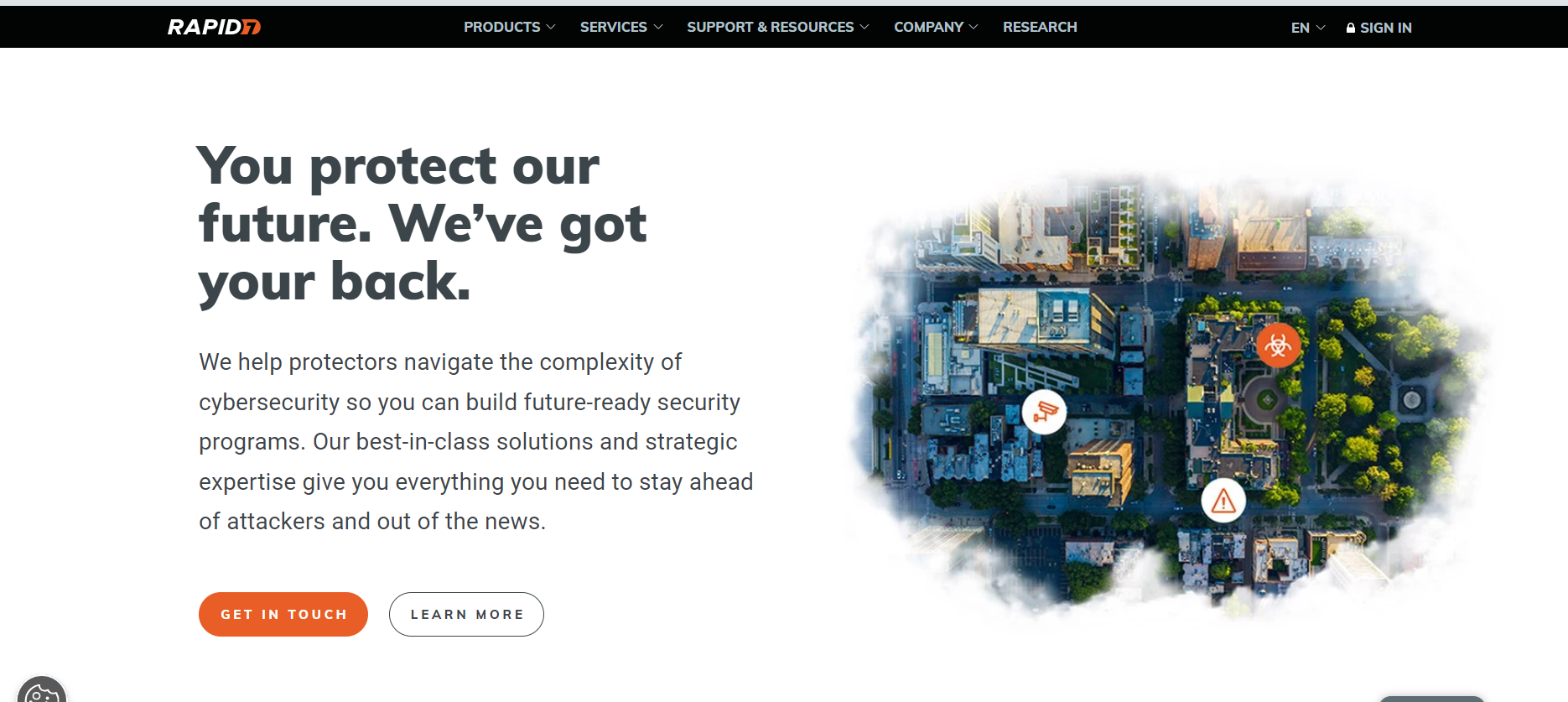
Features:
- Scanner Capabilities: Cloud and Web Applications
- Accuracy: False Positives Possible
- Scan Behind Logins: No
- Compliance: CIS, ISO 27001
- Integrations: Splunk, AWS, Microsoft
- Expert Remediation: No
- Pricing: $175/month
Rapid7 provides world-class application security, vulnerability management, and SIEM services.
Rapid7’s Insight VM offers capabilities such as tracking, and reporting.
Other services provided by this company include penetration testing services and vulnerability scanning services.
Pros
- Simple and easy-to-navigate interface.
- Capable of finding hidden vulnerabilities
- Great and easy-to-understand reports.
Cons
- Customer support can be improved.
- Removal of scanned devices must be done manually.
4. BreachLock
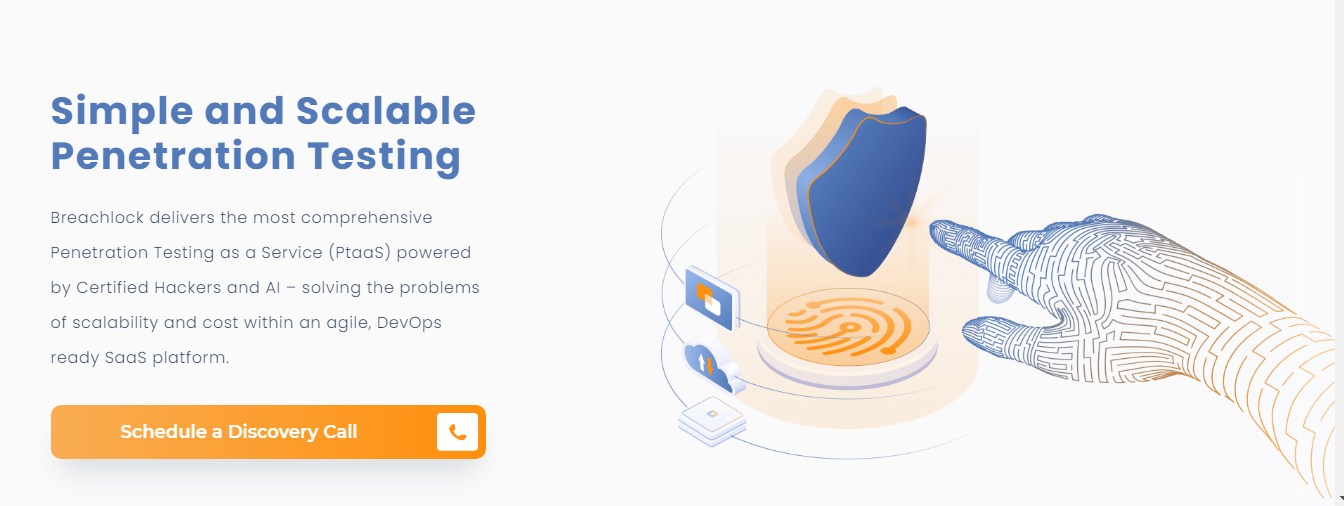
Features:
- Scanner Capabilities: Web and mobile applications, Network, APIs, cloud.
- Accuracy: False positives possible.
- Scan Behind Logins: Yes
- Compliance: PCI DSS, HIPAA, SOC 2, ISO 27001, GDPR
- Integrations: Slack
- Expert Remediation: Yes
- Pricing: Quote on request
Breachlock offers a valuable vulnerability management program as well as penetration testing services. It is a SaaS platform that allows you to request a pentest and after the penetration test is conducted you can avail of monthly scans through the same SaaS platform.
Breachlock’s team of ethical hackers conduct AI-augmented pentests giving you a comprehensive picture of your security posture. Accompanied with this is their fast remediation support as well as compliance readiness.
Pros
- Continuous addition of risk checks
- Scalable vulnerability management solution
- Manual and automated testing options
- Helps in identification of gray areas in the codes
Cons
- Product support could be improved
- Documentation can be confusing
5. ArcticWolf
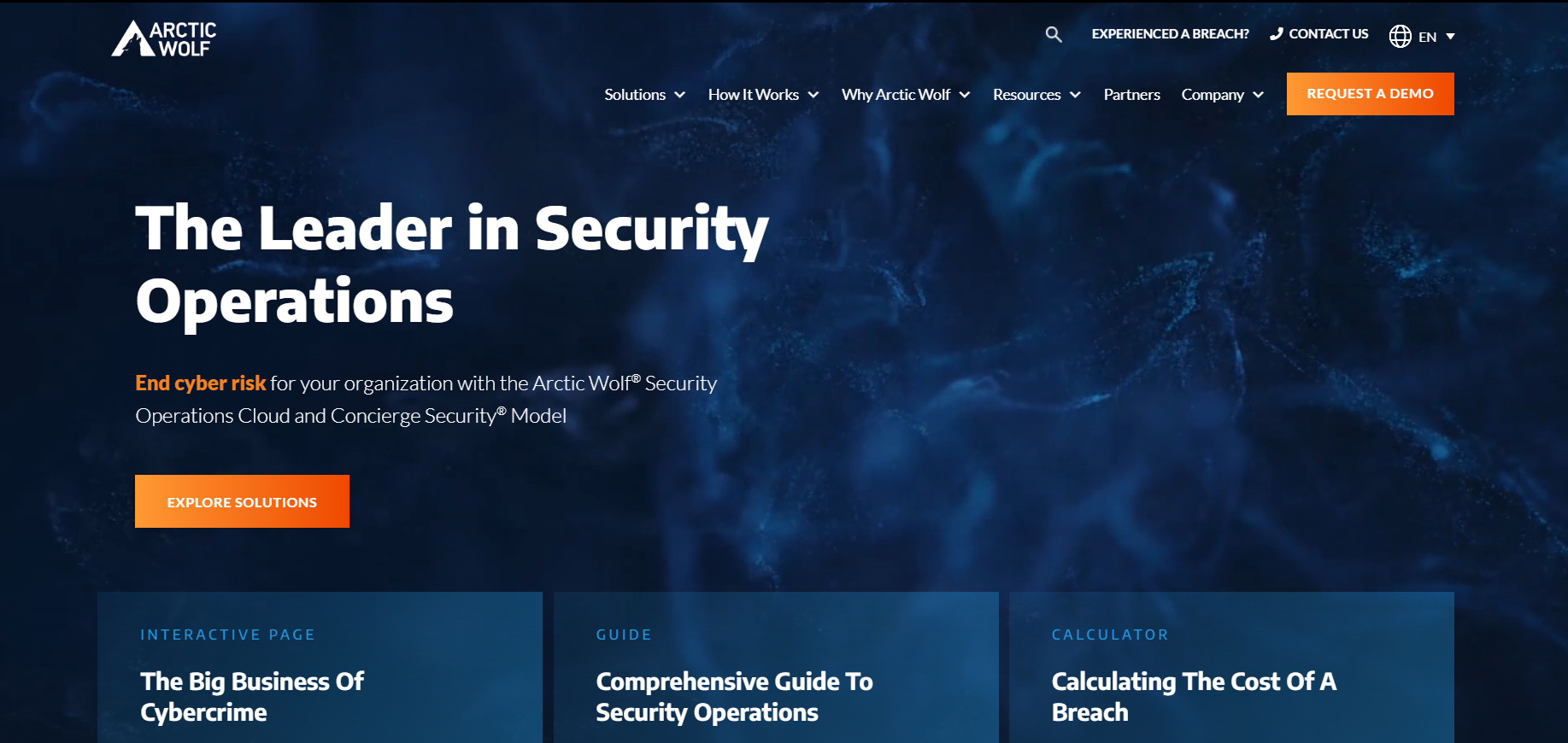
Features:
- Scanner Capabilities: networks, websites
- Accuracy: False positives possible
- Scan Behind Logins: Yes
- Compliance: GDPR, HIPAA
- Integrations: Cisco, AWS, Google
- Expert Remediation: Yes
- Pricing: Quote on Request
This company provides managed detection and response solution that is available 24*7. It includes constant monitoring of networks, cloud environments, and endpoints.
Arctic Wolf eliminates alert fatigue and the possibility of any false positives while customizing responses catered to the organization.
Pros
- Good security protection solution.
- A cost-efficient solution to having an in-house SOC.
Cros
- Notifications can take time.
- Could have more integrations than currently available.
6. Orca Security
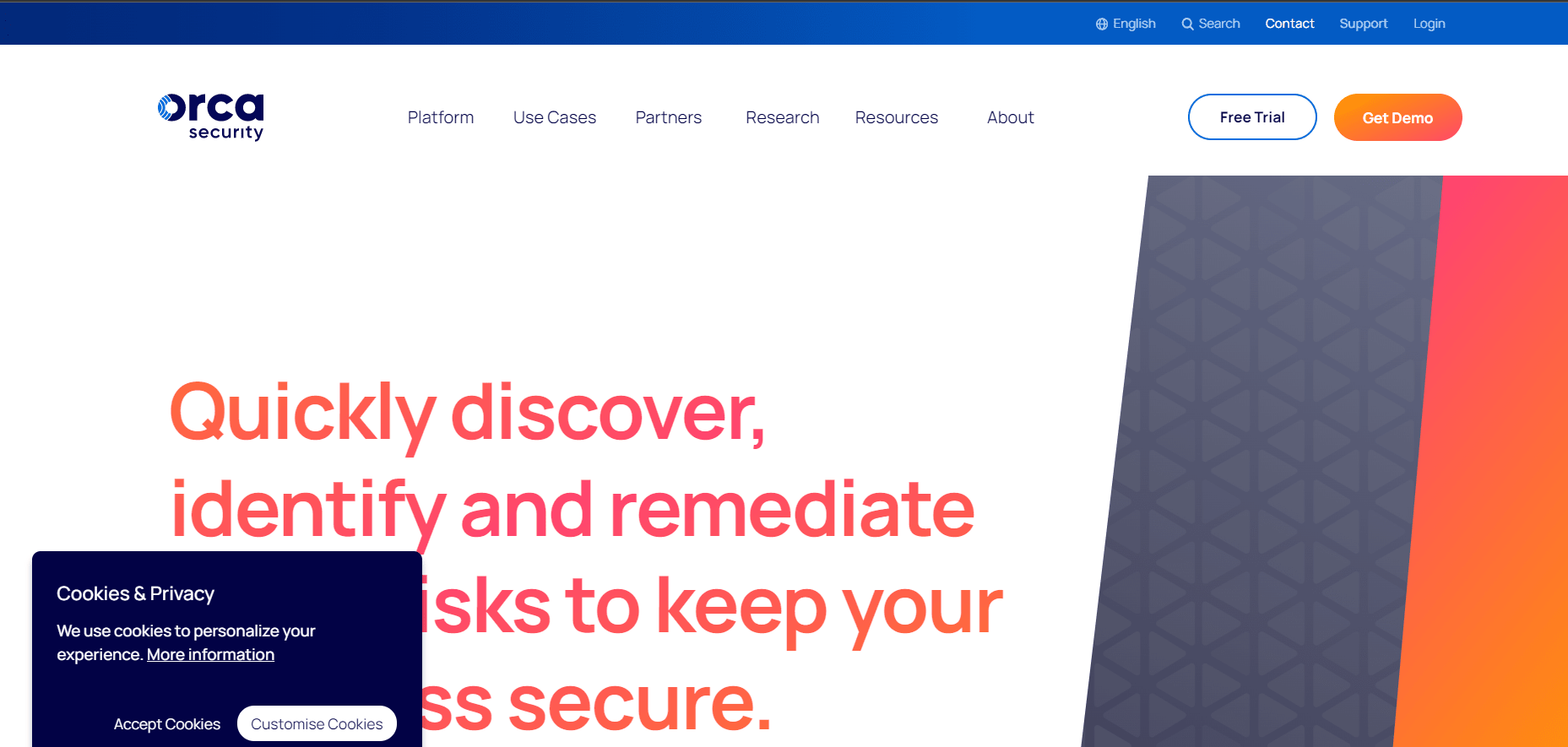
Features:
- Scanner Capabilities: AWS, Azure, Google Cloud
- Accuracy: False positives possible
- Scan Behind Logins: No
- Compliance: CIS
- Integrations: AWS, Azure
- Expert Remediation: Yes
- Pricing: Quote on Request
Orca Security helps you cover vulnerabilities that might have escaped the agent-based vulnerability scanning solutions. It provides vulnerability management services for cloud infrastructures like AWS, Azure, and Google Platform.
It combines all cloud assets in a single graph and supports more than 40 CIS benchmarks and other security regulations. Orca’s vulnerability management program makes actionable data easily available to the right teams.
Managed services from Orca Involve a simple 3-step process that includes discovery, monitoring, and assessing the assets.
Pros
- Vulnerability management services for AWS, Azure, and Google platform.
- Provides actionable data
- Provides data encryption and antivirus protection.
Cons
- No upfront pricing provided
7. Alert Logic
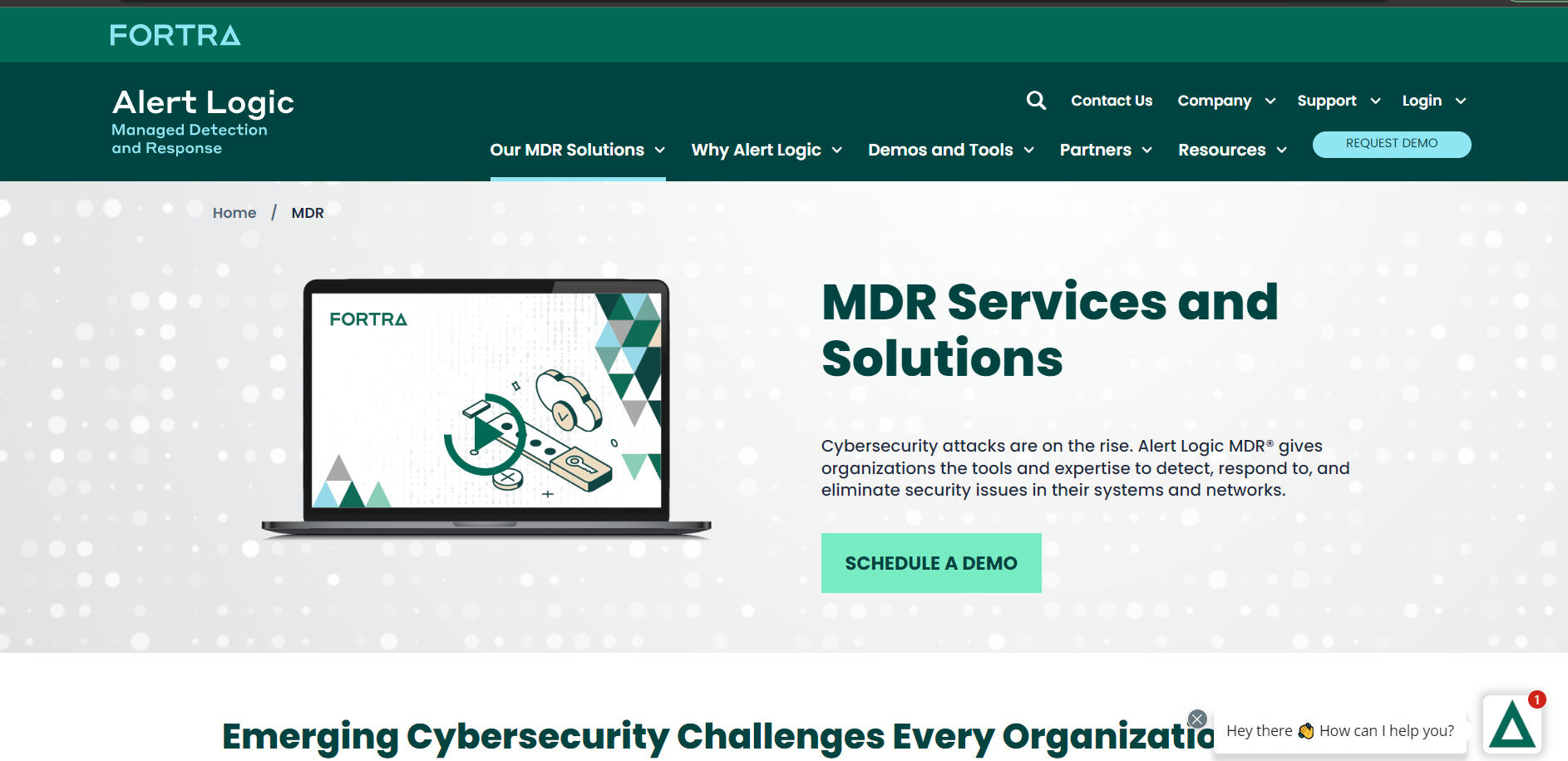
Features:
- Scanner Capabilities: networks
- Accuracy: False positives possible
- Scan Behind Logins: Yes
- Compliance: PCI-DSS, HIPAA, ISO, GDPR.
- Integrations: AWS, Apache, Azure, Cisco
- Expert Remediation: Yes
- Pricing: Quote on request
AlertLogic is a well-known SOC-as-a-service and vulnerability management provider that provides managed threat detection and response services (MDR).
Their holistic services include 24*7 threat monitoring, incident validation, remediation, log management, and more.
Pros
- User-friendly solution
- Precise and timely notifications
- Easy-to-navigate dashboards.
Cons
- Could have better end-point protection.
8. Symantec

Features:
- Scanner Capabilities: Web scans, computer scans, cloud, networks
- Accuracy: False positives possible
- Scan Behind Logins: No
- Compliance: Yes
- Integrations: Azure
- Expert Remediation: No
- Pricing: $39/ year
Symantec’s cloud workload protection provides automated security measures for your cloud providers and customers alike.
Symantec offers a client management suite that aims at deploying, managing, patching, and securing various assets on desktops and laptops.
Other services by Symantec include endpoint and identity security as well as information and network security.
Pros
- Provides end-point protection and threat detection.
- Also has centralized management.
- Has malware detection capabilities with the capacity for immediate remediation.
- Can be integrated within the CI/CD pipeline.
Cons
- A pricey cloud security solution.
- May not be feasible for small to medium-sized companies.
- Could provide better integration possibilities.
9. Cobalt

Features:
- Scanner Capabilities: Web and mobile applications, APIs, Networks, and Cloud.
- Accuracy: False positives possible
- Scan Behind Logins: No
- Compliance: SOC2, PCI-DSS, HIPAA, CREST
- Integrations: GitHub, Jira, Slack
- Expert Remediation: Yes
- Pricing: $ 1650/Credit (8 pentesting hours)
Cobalt is a cloud-based vulnerability management company is automated and generally available for web applications. It provides management service for an organization’s infrastructure.
It’s SaaS platform helps you gather real-time insights so that your teams can get on with the remediation quickly. It helps you with cloud scanning and other forms of pentesting.
Pros
- Impressive existing clientele including Nissan and Vodafone.
- 14- day trial period.
- Accelerated find to fix cycles
Cons
- The retest often takes too much time
- Complex pricing structure
- Reported false positives
10. SecureWorks

Features:
- Scanner Capacity: web and mobile applications, networks, APIs
- Accuracy: False positives possible
- Scan Behind Logins: Yes
- Compliance: PCI-DSS, HIPAA
- Expert Remediation: Yes
- Pricing: Not mentioned
SecureWorks, a top-notch vulnerability management tool, offers security solutions and services for information assets, networks, and systems. They offer services like pentesting, application security testing, malware detection, risk assessments, and many more.
The company’s tools and services are capable of performing nearly 250 billion cyber programs that help in threat detection and mitigation making them one of the leading cybersecurity solutions.
Pros
- Easy to align security environment with industry standards like NIST and ISO
- Active communications
Cons
- Too expensive for SMEs
- There’s a delay between suspicious activity and the alert raised
11. Sophos

Features:
- Scanner Capabilities: Web, Mobile, Cloud, Network and API scanning
- Accuracy: False positives possible
- Scan Behind Logins: No
- Compliance: PCI-DSS, HIPAA, GDPR
- Integrations: Splunk, Slack, Jira, Jenkins, BitBucket
- Expert Remediation: Yes
- Pricing: Quote upon request
Established in 1985 Sophos Cloud, a top vulnerability assessment and management company, offers simplified enterprise-level solutions for cloud security including vulnerability scanner solutions, 24/7 cloud threat detection and response, native protection, and security automation for DevOps.
These services are typically offered as part of Sophos’ larger suite of cybersecurity solutions, which also include endpoint protection, email security, and network security.
Pros
- Available for AWS, GCP, and Azure.
- Helps with security automation through DAST, SAST, and SCA code analysis.
- Intuitive user-friendly dashboard.
Cons
- It can be expensive.
- Difficult to set up.
- Customer support could be better.
Importance of Vulnerability Management Companies
Here are some of the main reasons why the services provided by vulnerability management companies are essential for asset security.
1. Helps Meet Compliance
Many organizations are required to comply with various regulations and industry standards, such as PCI DSS, HIPAA, and NIST, which mandate regular vulnerability assessments. Using a vulnerability management system can help organizations meet these compliance requirements.
2. Early Threat Identification
Vulnerability management is a cyclic process that dedicates a significant amount of time and resources for the quick and timely detection of potential threats, risks, and vulnerabilities.
Such early threat identification makes a major difference as it ensures that your organization’s web applications, networks, cloud infrastructure, and or other cyber assets are constantly protected.
3. Remediation Assistance
Popular vulnerability management tools can help organizations prioritize vulnerabilities based on their severity and potential impact, allowing them to focus on the most critical issues first.
By identifying and addressing vulnerabilities proactively through automated remediation, organizations can minimize the risk of a security breach and protect their sensitive data.
4. Continuous Monitoring
The tools provided by vulnerability management companies can continuously monitor the network, systems, and applications for new vulnerabilities and alerts the administrator as soon as a new vulnerability is discovered.
Relevant Features of Vulnerability Management
Some of the other relevant features offered by top vulnerability management tools include:
1. SDLC Integration
Integrating vulnerability management tools into the development allows for continuous scanning, monitoring for vulnerabilities throughout the development of an application.
Such integration also allows for organizations to be continuously compliant with the important regulatory standards they need to abide by like GDPR, ISO 27001, HIPAA, and PCI-DSS.
2. Vulnerability Reports
Well-detailed reports have the scope of testing, vulnerabilities found, methods of exploitation, the extent of damages and information revealed from exploiting them all explained in detail.
The report should also mention the CVSS scores for these vulnerabilities and the detailed steps to take to patch them up. Such reports are extremely useful for organizations.
3. Service Scalability
Scalable vulnerability management solutions allow organizations to adapt to changing needs and budgets. This flexibility allows organizations to perform assessments and scans on a regular basis, ensuring that their systems remain secure over time.
4. Customer Support
Customer support forms an integral part of a good vulnerability management service. Customers should be able to connect and have their queries remediated as quickly as possible by the expert cybersecurity assessment professionals within the vulnerability management companies.
Processes Available In Vulnerability Management
The most common types of tools provided by competent vulnerability management systems include:
1. Vulnerability Scanning
This included automated vulnerability scanning and penetration testing, cloud configuration reviews, and network analysis. They are carried out to find any potentially exploitable flaws or security threats based on a large evolving vulnerability database.
2. Penetration Testing
This is the process of carrying out an extensive hacker-like analysis by finding vulnerabilities and also exploiting them just like an actual hacker would to find the extent of threats posed by each vulnerability.
3. Risk Assessments
Risk assessment is a far more generalized process that is aimed at locating threats outside of an asset. It analyzes these threats to understand which ones could pose a problem to the assets in the future.
4. Vulnerability Assessments
Vulnerability Assessments involve a thorough internal assessment of assets to find vulnerabilities, and identify and evaluate them in order to mitigate them based on priority.
Steps in Vulnerability Management
1. Detection Of Vulnerabilities
Make use of a comprehensive vulnerability scanner with a good vulnerability management system. Such a scanner should be able to continuously scan and detect even the most minute of vulnerabilities.
It should also have an extensive vulnerability database so that all vulnerabilities are rightly assessed. A good scanner should also be able to carry out behind-the-login scans, detect logic errors, weed out any false positives as well as ensure that there are no false negatives.
2. Identification Of Vulnerabilities
This step involves the identification of vulnerabilities that were found within the system using vulnerability scanners.
In general, it should be able to detect the known CVEs, and vulnerabilities mentioned in standard frameworks like the OWASP Top 10 and SANS 25 as well as based on the current trends in malicious exploitation.
The process results in mapping out your assets in detail and scouring them for any possible vulnerabilities that could construe a threat to the cloud platform. It is vital to schedule such scans during slower traffic times as it can cause disruptions in regular operational conditions.
3. Evaluation Of Vulnerabilities
Evaluation of identified threats is to prioritize them according to the mentioned risk levels posed by each vulnerability. This allows a team to understand which of the vulnerabilities need to be fixed immediately and make a diligent plan in lieu of it.
The most common system used to evaluate the extent of threats posed and prioritize them is the CVSS system. CVSS stands for Common Vulnerability Scoring System, it assesses the vulnerabilities according to a few set characteristics like their traits and specific effects on the cloud. Based on the scores, the vulnerabilities are patched.
4. Reporting
Once the evaluation is carried out and the flaws are patched, mitigated, or left as such, a detailed vulnerability report is generated by the vulnerability scanner.
This report details the details of the scan, the methods employed to detect vulnerabilities, and the vulnerability database used as a standard reference. Along with this, the vulnerabilities found are listed and extensively explained with their CVSS scores as well as possible remediation measures.
5. Remediation
Once the vulnerabilities are assessed according to the risk they pose, it is now time to respond and fix each flaw found. This is done based on the data from the risk assessment.
Based on the threat level there are four general measures that can be opted for to create a viable and healthy security solution for the cloud. This includes:
- Patching: This refers to fixing the highest risk posing vulnerabilities immediately based on their risk severity.
- Shielding: Vulnerabilities that are too difficult or impossible to fix are covered with a protective shield around the vulnerability thereby effectively isolating it.
- Mitigation: Another solution for remediation is to try and reduce the risk or problem posed by them to the security of the cloud.
- No Action: This refers to taking no action against some found vulnerabilities.
6. Rescanning
The final step after remediation is to avail a re-scan to ensure the security system of the asset is free from all the initially found flaws and they have been appropriately managed or fixed.
Doing so is akin to going the extra mile in the name of safety and truly ensures asset protection. It also increases your reputation as a safety-conscious provider and increases trustworthiness.
Conclusion
This article has provided detailed information regarding the current best vulnerability management tools. Peruse thoroughly to make a choice that is right for you and your organization’s online assets.
FAQs
What are the 4 types of vulnerabilities seen in cybersecurity?
The 4 types of vulnerabilities commonly seen in cybersecurity are:
1. Human Error Vulnerabilities
2. Network Vulnerabilities
3. Procedural Vulnerabilities
4. Operating System Vulnerabilities
What are some common vulnerabilities?
The most common vulnerabilities that plague online assets are misconfiguration, data loss or theft, non-compliance, vulnerable access management, and APIs.
Are risk assessment and vulnerability assessment the same?
No, they are related processes that involve different methodologies. You can find the differences between the two here.
![Top 11 Vulnerability Management Companies [Reviewed]](https://cdn-blog.getastra.com/2023/03/Copy-of-Featured-Images-40.png)















